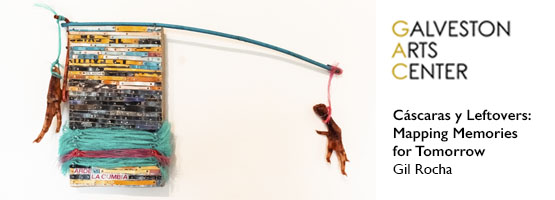Choreographer and University of Houston Assistant Professor M. Gabriela Estrada has always looked to the past to inspire her work. Now she is embarking on two major choreographic undertakings that draw on history to commemorate pioneers of Spanish and Latin dance.
While the story of Fernández is relatively obscure outside of specific dance circles, Estrada was surprised to discover that legendary American choreographer Doris Humphrey had created a dance for José Limón and his company in 1954 inspired by Fernández. The work and musical score have since been lost. Now Estrada is following a trail of historical clues to create a new piece inspired by Humphrey’s dance Felipe “El Loco.”
Estrada has created a challenge for herself. “We have no footage of Doris Humphrey doing flamenco,” she says. “There’s no video [of the original dance], no footage, no notation….No information on the music except the three guitarists whose records Humphrey used.”
But in the process of bringing this project to life, Estrada has been able to explore a treasure trove of interwoven histories and artistic memories, including a recorded interview of Pauline Koner, who was cast alongside José Limón in the Humphrey original, and conversations with dancers and historians who worked with Humphrey, Limón, and Koner. And while the music that accompanied the 1954 dance has been lost, Estrada studied dozens of works by the three musicians who were part of the performance to understand what the score might have sounded like. She is now working with acclaimed Spanish composer Juan Parrilla, to create a new score.
Estrada describes the collaboration with Parrilla as one of the most engaging parts of the process: “[Parrilla] would be trying to convey how Félix would be arriving by boat on a foggy afternoon and how cold it was by using, [for example,] an Irish flute. We would listen to this, and then I would get up and match how it would work on stage….That has been a fascinating project!”

1 ⁄8
Camila Sosa and Trenton Tabak in M. Gabriela Estrada’s Romance de la Luna at Quintero Theater, University of Houston. Photo by Pin Lim.

2 ⁄8
M. Gabriela Estrada Impromptu, New York Public Library. Photo by Alexandra Vainshtein.

3 ⁄8
Argelis Wesley, M. Gabriela Estrada, and Paco Millán while filming The Legend of Félix at Ballet Hispánico. Photo by Alexandra Vainsthein.

4 ⁄8
Ivanka Argüelles in M. Gabriela Estrada’s No More Carmens! Photo by Alexandra Vainsthein.

5 ⁄8
Camila Sosa (Dancer), Irma La Paloma (Lyricist & Flamenco Singer), Gabriela Estrada (Choreographer & Dancer), Jeremy García (Guitarist & Composer), Andrés Félix (Percussionist), and Margo Smolik (Dancer) in Phoenix: Renacer at Mix MATCH. Houston, Jan. 13, 2024. Photo by Pin Lim.

6 ⁄8
Carlos Ríos and Tiffany Solís in Reconstruction, inspired by the research on Doris Humphrey’s Felipe “El Loco,” at Teatro Íntimo Xicoténcatl Gutiérrez, Mexico, June 6, 2024. Photo by Gabino Guerrero.

7 ⁄8
Ivanna Paulina Manríquez in Reconstruction, inspired by the research on Doris Humphrey’s Felipe “El Loco,” at Teatro Íntimo Xicoténcatl Gutiérrez, Mexico, June 6, 2024. Photo by Gabino Guerrero.

8 ⁄8
M. Gabriela Estrada in Alegrías at a private performance at Ballet Hispánico. Photo by Alexandra Vainsthein.
As she moves forward with the Humphrey-inspired work, Estrada has also begun another major project that weaves together the past and the future in honor of her mentor and friend, the late Héctor Zaraspe.
“When I finished my Ph.D. and submitted my work for the defense on October 28, 2016 and I was flying to New York to visit my daughter for four weeks,” explains Estrada. “I was also going to apply for work at Ballet Hispánico and I looked down through the window and I made two wishes: one that I would get the job at Ballet Hispánico and that I would teach every child I could see in the landscape below. And guess what—I got that! And the second was that I would meet Maestro Zaraspe and that he would take me under his wing.”
Shortly thereafter, Estrada’s dream became reality.
Héctor Zaraspe is a unique figure in the dance world. Born in Argentina in 1930, he trained in ballet in Argentina and Spain and eventually became a renowned ballet master to legends like Rudolf Nureyev and Margot Fonteyn, as well as a choreographer and proponent of Latin American and Spanish dance. Estrada had seen countless references to Zaraspe through her work, and she eventually reached out to him directly after arriving in New York in 2016.
In collaboration with the University of Houston and The Juilliard School, Estrada is now working on a tribute to her beloved mentor, including a new work by Estrada that incorporates both biographical elements of Zaraspe’s life and homages to his legacy as a teacher and choreographer.
In both her current projects, Estrada remains committed to the belief that knowledge of the past is important for the future of dance—vital, even. As she works to bridge dance styles and national traditions, Estrada concludes, “Understanding the past teaches us values like resilience, patience, persistence, bravery, and commitment to the arts and humanity.”
—LINDSAY ALISSA KING





